Exploring Blender for Fashion Design: A Detailed Review

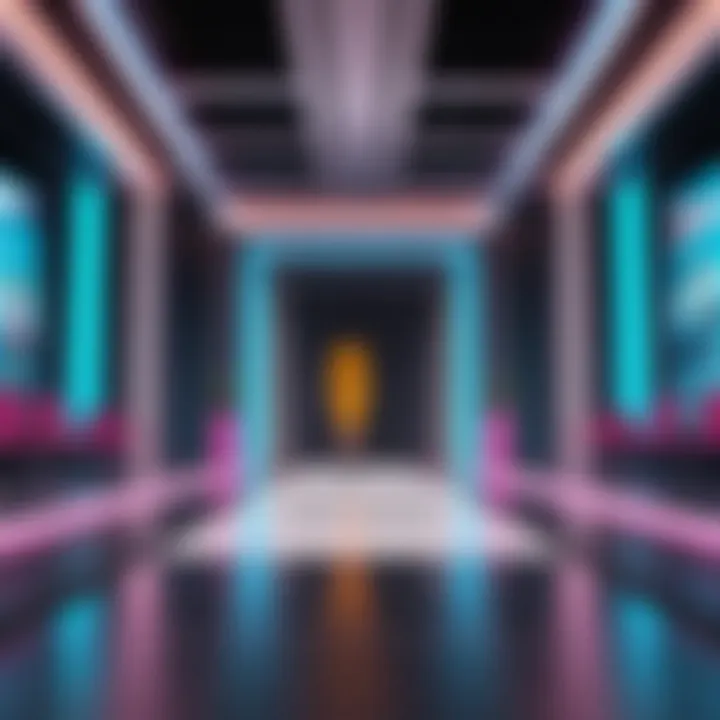
Intro
In recent years, the shift towards digital solutions in the fashion industry has reached a pivotal moment. Fashion designers, looking for fresh avenues to explore creativity, are increasingly turning to software tools that not only enhance productivity but also boost their design capabilities. Among these tools, Blender stands out as a versatile platform that has garnered significant attention. This article delves into Blender's role in fashion design, offering insights into its functionalities, usability, and overall relevance in today’s competitive landscape. By examining the core features of Blender, alongside comparisons to other software options, we aim to arm fashion designers and related professionals with the knowledge they require in this ever-evolving digital age.
Overview of Core Features
Blender wasn't initially conceived as a fashion design platform, but it has blossomed into a robust tool for designers. Here, we unpack key functionalities that make Blender an appealing choice:
- 3D Modeling: At its core, Blender excels in creating detailed 3D models. Fashion designers can sculpt clothing items, accessories, and entire outfits with precision.
- Simulation Handling: The software incorporates physics simulations that allow designers to see how fabrics behave under various conditions, simulating real-world reactions like gravity and wind.
- Texturing and Materials: With Blender’s comprehensive texturing tools, designers can apply colors, patterns, and finishes to their models. This feature plays a crucial role in visualizing the final product.
- Animation Capabilities: Designers can not only create static models but also animate their designs, offering a dynamic representation that can be invaluable for presentations and marketing.
Comparison of Features Across Top Software Options
Blender continues to compete with high-end fashion design software such as CLO 3D and Marvelous Designer. While each has its merits, here’s how Blender stacks up:
- Cost-Effectiveness: Blender is open-source and free, making it accessible. In contrast, CLO and Marvelous come with significant price tags.
- Customizability: Blender's open architecture allows users to customize tools and extend functionalities through plugins. This flexibility may be limited in other options.
- Community Support: With a robust global user base, Blender benefits from extensive community support, tutorials, and online resources.
- Cross-Industry Applications: While CLO and Marvelous are tailored for fashion, Blender serves various industries, giving it a unique edge.
User Experience and Interface
Insights into UI/UX Design Aspects
Blender's interface may seem overwhelming at first glance, especially for newcomers. However, users often appreciate its modular architecture. Designers can customize their workspace, placing tools where they find them most intuitive.
Moreover, workflow efficiency is emphasized through features like keyboard shortcuts and customizable menus, which can significantly speed up the design process. This flexibility tailors the experience according to the user’s needs, a key consideration for time-sensitive projects.
Importance of Usability and Accessibility
Despite its strengths, some users may encounter a learning curve. The complexity of its interface can be off-putting for those simply looking for straightforward fashion design functionalities. But time spent understanding Blender often pays off. Users who invest in learning the software report substantial returns in terms of creative freedom and output quality.
Blender’s accessibility is noteworthy—available on multiple operating systems, it invites a diverse audience to explore its vast capabilities.
"In fashion design, creativity knows no bounds; Blender is one tool that pushes those boundaries even further through its exceptional flexibility and extensive features."
Foreword to Blender
In today's fast-paced digital landscape, Blender has garnered significant attention, particularly in the realm of fashion design. This free and open-source software has found its way into the hands of both budding designers and seasoned professionals. Understanding its foundation, utility, and developments becomes paramount as it directly influences the creative fabric of the industry.
The relevance of Blender cannot be understated. As global fashion trends evolve rapidly, designers seek tools that can keep up with their creative ambitions while being cost-effective. Blender stands out as an answer to many challenges faced by fashion designers—offering flexibility and powerful features for garment visualization, 3D modeling, and even animation.
Moreover, the community surrounding Blender has grown robust, adding a layer of support through tutorials, forums, and user-generated content. This sense of community further underscores Blender's appeal as it empowers users with shared knowledge and resources to hone their skills.
In this section, we will delve into the origins and development of this software, along with its evolution in the creative industry. These foundational elements will help illuminate why Blender is not just a tool, but a pivotal player in fashion design today.
Understanding Blender's Origins and Development
Blender’s journey began in 1994 when it was created by Dutch software developer Ton Roosendaal as an in-house tool for his animation studio, NeoGeo. Initially, it was a commercial product, but the direction changed in 2002 when the company behind it went bankrupt.
In a surprising turn, Roosendaal rallied the community to fund a campaign to release Blender as open-source software. This monumental decision changed the fate of not only Blender but also embedded a culture of collaboration and innovation within the software.
Since then, continuous updates and improvements have flowed in, resulting in an extensive toolset that has attracted a myriad of users—from animators and artists to those in the fashion industry. The frequent upgrades have ensured that Blender keeps pace with technological advancements while embracing feedback from its growing user base.
The Evolution of Blender in the Creative Industry
As time progressed, Blender began to establish its footprint across various domains in the creative industry. The introduction of features like sculpting, texture painting, and advanced simulations opened up endless possibilities.
Many professionals have opted for Blender over traditionally favored software for its powerful performance and versatility. Its usage in CGI for films and games has extended into the fashion industry, where designers are increasingly choosing it for 3D garment visualization and virtual prototyping.
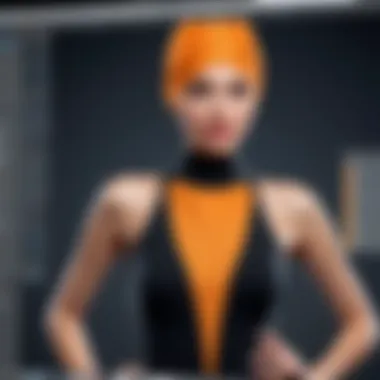
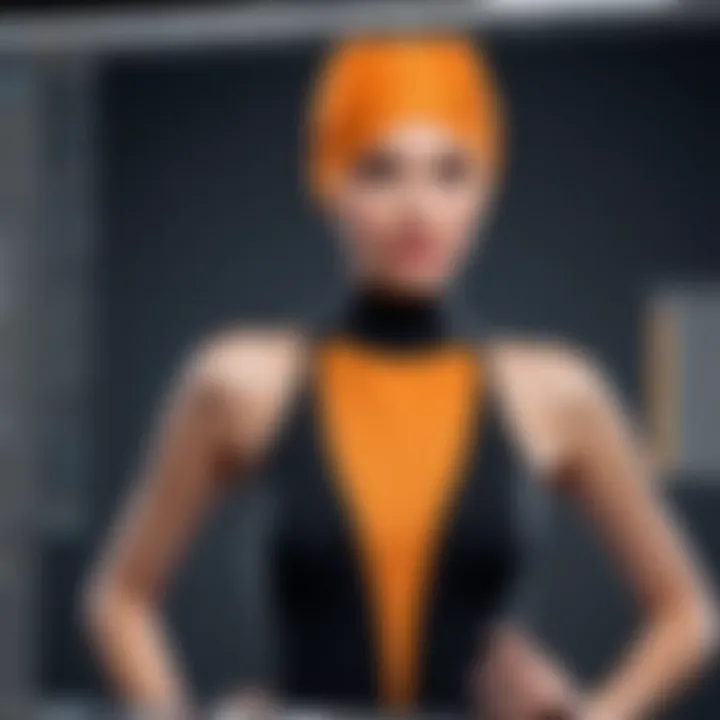
"Blender's rise in popularity indicates a shift towards greater accessibility in high-quality design tools, enabling many to express their creativity without the heavy financial burden."
In several educational settings, Blender has been adopted in curricula aimed at teaching design fundamentals, further cementing its role in shaping the next generation of designers.
Blender's evolution also denotes a growing trend towards integrating design processes into a singular workflow, allowing for seamless transitions between modeling, rendering, and animation. This cohesive approach has empowered fashion designers to experiment and iterate on their ideas faster than ever before.
Understanding both the origins and the evolution of Blender gives significant context to its application in fashion design today and piques interest in exploring its extensive functionalities.
Blender as Fashion Design Software
Blender has carved a niche for itself in the fashion design sector, a realm often dominated by other specialized tools. Its open-source nature and versatile features provide a powerful alternative for fashion designers looking to innovate. As we dive into this section, we’ll shed light on why Blender is gaining traction among designers and how it can significantly streamline the design process. The importance of this topic stems from not just understanding Blender’s capabilities, but also recognizing the unique opportunities it presents to both emerging and established designers.
Key Features Relevant to Fashion Design
Blender’s robustness comes from a suite of features that can cater specifically to the needs of the fashion design industry. Here are the standout attributes:
- 3D Modeling: Blender excels in creating intricate 3D representations of clothing. This is crucial for grasping complex designs and visualizing how fabric interacts in three-dimensional space.
- Sculpting Tools: The sculpting capabilities allow designers to transform flat textures and enhance them into lifelike apparel creations. It’s like molding clay, but with fabric!
- Fabric Simulation: One key element is the simulation of how fabrics drape and move. Through the physics system, designers can see how garments will behave under real-world conditions, an invaluable aspect for finalizing designs.
- Texturing and UV Mapping: Blender enables detailed texturing, with UV mapping tools that create realistic surfaces. The ability to create intricate patterns is essential for fashion tooling.
These features make Blender not just a toy for hobbyists, but a serious contender in professional fashion design.
User Interface and Usability
User experience is pivotal when diving into complex software like Blender, especially for fashion designers who may not have a tech-savvy background. Blender’s interface can be daunting at first glance but offers numerous user-oriented solutions. Here’s how it stands out:
- Customizable Workspace: The interface allows significant customization. Users can adjust panels to suit their workflow, which means that designers can streamline their processes to suit their style.
- Intuitive Navigation: While it may take a bit to get accustomed to, once users grasp the shortcuts, navigation becomes much smoother. The learning curve, though steep initially, can lead to greater efficiency down the line.
- Community Support: The vast community around Blender is an invaluable resource. Forums and social platforms, like Reddit and Facebook, offer additional guidance and tips from experienced users.
"The flexibility of modifying the UI in Blender is as refreshing as a spring breeze, tailored to a designer's unique workflow."
As designers become more acclimated to the interface, many find it serves them well, allowing for productive and creative sessions without excessive distraction.
In summary, Blender’s combination of powerful features and user-centric design makes it a noteworthy player in the fashion design software arena. Designers who dare to navigate its complexities often find a toolbox full of options at their fingertips, enabling them to innovate and create like never before.
Advantages of Using Blender for Fashion Design
Using Blender for fashion design offers a range of advantages that can significantly benefit designers, both emerging and established. The software provides tools that cater to intricate design needs, while also being accessible for those who may not have the deepest pockets for pricey software. There are specific elements contributing to its appeal, largely hinging on three pillars: cost efficiency, adaptability in design processes, and powerful integration of 3D modeling and animation.
Cost Efficiency of Open-Source Software
One of the standout features of Blender is its cost efficiency. Unlike many industry-standard software, Blender is open-source, meaning it’s free for anyone to use and modify. This aspect is crucial for many designers just starting out or for small businesses that operate on tight budgets. The absence of licensing fees means that funds can be redirected to other essential areas, such as materials or marketing.
Moreover, the open-source community around Blender is incredibly vibrant. Designers can engage with a plethora of plugins and extensions developed by fellow users, which can enhance their design capabilities without incurring additional costs.
"In a world where design tools can break the bank, Blender stands as a beacon of opportunity."
This free access does not compromise quality. In fact, countless designers have found that the software's features, including rendering realism, exceed their expectations, which is a clear indicator of great value.
Flexibility and Customizability in Design Process
Flexibility is another significant advantage. Blender accommodates a diverse range of styles and methods. Whether a designer wishes to experiment with high-fashion silhouettes or delve into avant-garde concepts, Blender provides the tools to adapt to these creative whims. The software allows for intricate sculpting, texture painting, and materials editing, offering a comprehensive toolkit for realizing one’s vision.
Unlike traditional software, designs in Blender can be easily modified. Changes in the fabric draping or color palettes can be done on the fly, streamlining the entire design process. This level of customization is essential in an industry where trends shift rapidly. Designers can swiftly respond to market demands or personal insights, all the while maintaining a polished finish to their work.
Integration of 3D Modeling and Animation
Blender excels in integrating 3D modeling with animation capabilities, which cannot be overlooked. In today's fashion landscape, 3D modeling isn’t just about creating visuals; it’s about storytelling and showcasing. Designers can bring their creations to life, illustrating how a garment moves or reacts to different conditions.
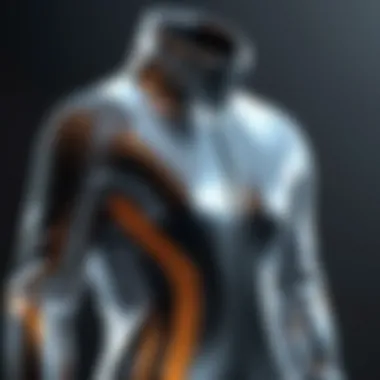
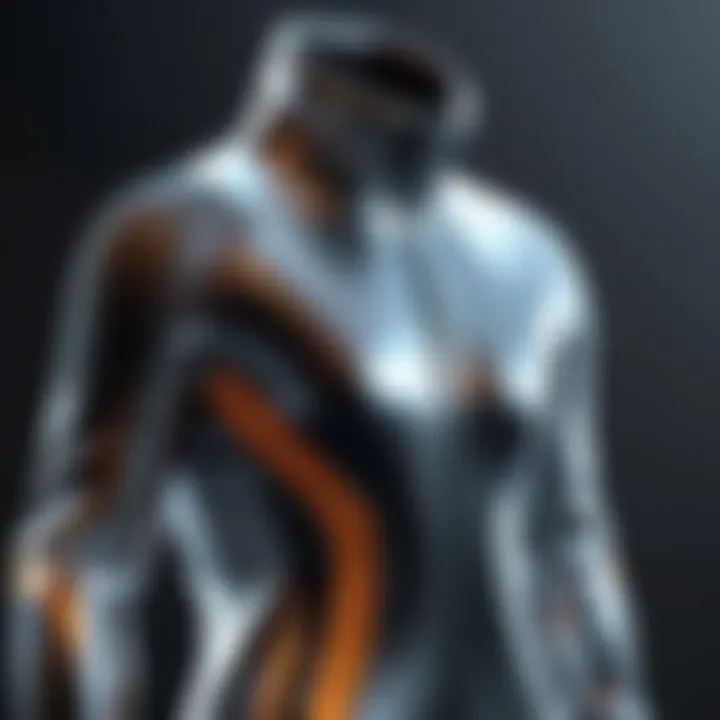
Incorporating animations allows for improved presentations, which can be pivotal when pitching ideas to stakeholders or buyers. The ability to create virtual fashion shows, complete with models, environment settings, and even dynamic movements, sets Blender apart from many traditional design tools. This integration cultivates a unique bridge between the conceptual and the tangible, allowing creativity to flow outside customary boundaries.
When designers leverage Blender’s full capabilities, they are not only producing static images; they are crafting an immersive experience that can captivate audiences across various platforms.
Limitations of Blender in Fashion Design
When diving into the world of fashion design software, it is crucial to not just highlight the benefits but also discuss the limitations that come with using a tool like Blender. Recognizing these drawbacks allows fashion designers to make informed decisions tailored to their specific needs. While Blender boasts a plethora of features that can significantly enhance the creative process, there are certain aspects that might hinder its effectiveness for some users. Here, we delve into a couple of noteworthy limitations that one ought to consider when integrating Blender into the fashion design workflow.
Learning Curve for New Users
One of the primary hurdles faced by users is the steep learning curve associated with Blender. Unlike more specialized fashion design software that might have interfaces designed specifically for fashion designers, Blender's broad range of tools and functionalities can be overwhelming for beginners.
- Complex Interface: New users may find it difficult to navigate around the myriad of buttons and settings. This complexity can lead to frustration rather than creativity. For instance, even simple tasks like applying textures can seem cumbersome.
- Tutorial Dependency: To fully harness the power of Blender, many newcomers find themselves reliant on external tutorials, which may lead to inconsistencies in learning. The vast amount of available resources can sometimes exacerbate confusion rather than alleviate it.
"Fashion design is all about creativity. But when learning a complicated tool feels like solving a Rubik's cube, it can stifle the creative flow."
While many experienced users find the depth of tools invaluable, it's an uphill climb for those just starting out. Therefore, prospective users should weigh whether the time investment in mastering Blender aligns with their immediate goals in the fashion industry.
Potential Performance Issues
Another critical limitation to consider is performance issues that may arise during intensive design tasks. Blender, while robust, is not immune to the follies of technical constraints.
- System Requirements: To run complex fashion designs smoothly—particularly those involving high-resolution textures and detailed simulations—a powerful workstation is often necessary. Users with standard setups might experience lag or crashes, disrupting workflow and creativity.
- Rendering Times: Rendering can be time-consuming, especially for intricate designs that demand high fidelity. The time taken for renders can sometimes eat away at productive hours, creating a frustrating experience for designers who are used to quicker turnaround times in other software.
In essence, while Blender is a powerful tool, these limitations necessitate careful consideration for those venturing into fashion design. Designers should be prepared for the learning curve and potential performance challenges that could impact their projects significantly.
In summary, recognizing the learning curve and potential performance issues posed by Blender enables fashion designers to navigate their design processes better. It allows them to weigh the advantages against the limitations, driving innovative and informed decisions that bolster their creative workflows.
Comparative Analysis: Blender vs. Other Fashion Design Tools
In today's competitive fashion industry, designers need the right tools to express their creative vision while maintaining efficiency in their workflows. A comparative analysis of Blender and other fashion design software sheds light on their specific strengths and weaknesses. This section focuses on how Blender stands against well-established programms like Adobe Illustrator and Clo3D, providing a nuanced perspective on their functionalities and user experiences. By understanding the relative advantages and disadvantages, designers can make informed choices about the software that best fits their needs, enhancing their design processes and outputs.
Blender vs. Adobe Illustrator
Adobe Illustrator is often deemed the gold standard for vector-based graphic design, particularly in fashion illustration and textile design. It provides robust tools for creating intricate designs and manipulating shapes with precision.
However, Blender offers a different approach; it brings 3D modeling and animation capabilities that Illustrator can't match. While Illustrator excels in 2D design, Blender’s 3D environment allows for more complex garments and simulations of how fabrics behave, adding depth to the design process. Here are a few points to consider:
- 3D Capabilities: Blender enables designers to visualize their concepts in three dimensions, which can be crucial for understanding how garments will drape and fit on a body.
- Cost Factor: Adobe Illustrator comes with a subscription fee, while Blender is entirely free. This makes Blender more accessible for emerging designers who may not have the budget to pay for premium software.
- Learning Curve: As versatile as Illustrator can be, it is arguably easier to find resources for learning it. Blender’s complexity can lead to a steeper learning curve, especially when diving into its advanced features.
"Ultimately, the choice between Blender and Illustrator hinges on an individual designer's focus��—2D precision versus 3D innovation."
Blender vs. Clo3D
Clo3D is specifically designed for fashion design, centered around the simulation of fabrics and garment construction. Its strength lies in realistic fabric simulation and real-world tailoring techniques, which makes it a go-to for many fashion industry professionals. Still, Blender stands its ground in several significant areas.
- Flexibility in Use: While Clo3D is arguably tailored for fashion, Blender's adaptability allows it to cater to a broader range of creative needs, from engineering designs to animated storytelling.
- Community Support: The Blender community is vast and vibrant, providing a wealth of tutorials, plugins, and user-generated content, which can enhance the software’s functionalities. Clo3D has a dedicated user base, but resources may not be as readily available.
- Integration Capabilities: Blender can easily integrate with other software tools, making it a strong player in a multi-software environment. This is an important consideration for professionals who require collaboration across various platforms.
In summary, while Clo3D focuses on garment design with high-fidelity fabric simulation, Blender offers broader versatility but requires understanding its more complex interface. Designers must weigh these aspects carefully to find the best fit for their individual workflow needs.
Case Studies of Blender in Fashion Design
Exploring the practical applications of Blender in the realm of fashion design offers a vivid glimpse into how emerging talents and established brands harness its capabilities. Key elements in this analysis include the versatility of the software and its role in fostering creativity in the industry. Case studies can serve not only as inspiration but also as a blueprint for best practices, showing how both sides of the fashion spectrum adapt this open-source solution to fit their unique needs.
Emerging Designers Utilizing Blender
In the whirlwind of fashion innovation, emerging designers adopting Blender have been gaining traction of late. They often seek to break the mold and push boundaries, making the software an excellent match due to its robust modeling and animation features. One standout example might be individuals like Jasper Ketterer, who, with minimal resources, cleverly utilized Blender to create 3D garments that are not only visually appealing but also precise in their fit and movement. These designers usually share their work on platforms like Reddit, fostering a community that thrives on feedback and collaboration.


The benefits of using Blender for newcomers are numerous:
- Budget-Friendly: As an open-source software, no exorbitant licensing fees stand in the way of creativity.
- Learning Resources: A plethora of tutorials and online forums offer support, making it easier to grasp complex functions.
- Experimentation: With an intuitive interface, designers can experiment freely without the pressure of time or investment in materials.
Emerging designers often showcase their work on social media and digital portfolios, allowing them to reach global audiences quickly. This exposure can sometimes lead to unique collaborations, pushing their designs into the marketplace.
Established Brands Adopting Blender
On the flip side, established fashion brands are beginning to recognize the potential Blender holds. Balenciaga, for instance, has integrated this software into its design workflow, using Blender for everything from concept sketches to detailed garment animations. The integration of Blender into a high-end brand’s pipeline exemplifies its capacity to streamline design processes while driving innovation.
Consider the advantages driving established brands toward this tool:
- Efficiency in Prototyping: The ability to create rapid virtual prototypes saves both time and material costs.
- Enhanced Visualization: Seamless rendering capabilities help in visualizing the final product even before it hits the production floor. This feature is paramount in presentations and marketing materials before a collection's launch.
- Collaboration Across Teams: The open-source nature and community-driven development allow for team members to customize Blender according to their project needs, fostering cooperation throughout the design and production stages.
In the competitive fashion landscape, the agility that Blender provides lets brands remain responsive to market demands while staying aligned with their creative vision.
"Blender is not just a tool; it’s a gateway to infinite creativity, allowing both emerging and established designers to fully express their aesthetic while optimizing the design workflow."
By investigating the usage of Blender across the spectrum of fashion designers, we not only highlight its adaptability but also recognize how integral it is to the contemporary landscape of fashion design.
Future Perspectives: The Role of Blender in Fashion Design
The impact of Blender on the fashion industry is more profound than it might appear at first glance. As we look at the future perspectives of Blender within fashion design, it becomes clear this software is not merely a tool used to model garments, but it’s reshaping how designers conceptualize, create, and communicate their vision. This section delves into trends that are pushing design forward and how Blender is catching the waves of these movements.
Trends Influencing Fashion Design Software
In the fast-paced world of fashion, staying ahead means observing and adapting to changing trends. A few key elements are currently influencing design software:
- Sustainability and Eco-Friendliness: Designers are increasingly focused on creating sustainable fashion. Blender's open-source nature allows users to experiment and optimize designs for sustainability. With the ability to virtually prototype, designers can analyze materials before they even begin physical production. This not only conserves resources but also leads to innovative fabric solutions.
- User-Centric Design: Modern fashion design involves feedback and collaboration from various stakeholders. Tools like Blender facilitate this requirement by offering collaborative platforms. Designers can share their work in real-time with clients or team members, speeding up the design process while incorporating more diverse inputs.
- Integration with Technology: Today’s fashion designers are leveraging technologies such as augmented reality (AR) and artificial intelligence (AI). Blender is not just limited to still images or videos; with additional plugins and creativity, designers can create AR experiences that allow customers to try clothing virtually. This adds another layer of engagement and innovation.
These trends indicate that Blender is on the right track, providing necessary features for designers to thrive and adapt in this evolving landscape.
The Growth of Virtual Fashion and 3D Prototyping
As the lines between the digital and physical realms continue to blur, the trend of virtual fashion and 3D prototyping is booming. This growth has several implications for Blender:
- Cost-Effective Prototyping: Traditional methods of creating samples are expensive and resource-intensive. Blender allows designers to create 3D models quickly, enabling them to showcase designs without the need for physical samples. This not only saves money but also reduces waste associated with fabric usage.
- Expansion of Virtual Platforms: Online communities and e-commerce platforms are starting to embrace virtual fashion shows and sales. Fashion brands are beginning to explore ways to market and sell digital clothing, which can be worn in virtual environments. Blender is at the forefront of this movement, as designers utilize it to craft garments that might never see a physical showroom.
- Enhancing Customer Experience: With the advent of digital lookbooks, customers are gaining a richer experience. Instead of flipping through paper catalogs, they can interact with 3D models created in Blender, viewing products from every angle and in various colors. This technological feature enhances engagement, making the buying experience more interactive and appealing.
"Blender is pushing the boundaries of traditional fashion design, leading us into an imaginative future where creativity meets technology."
In summary, the future of Blender in fashion design is promising. As trends evolve and new technologies come into play, this software is poised to remain a crucial component for designers aiming to innovate and adapt within the industry. The possibilities are boundless when one combines the creative capabilities of Blender with an eye towards future advancements.
The End: Adopting Blender for Fashion Design
Adopting Blender for fashion design represents a significant shift in how designers approach their craft. This article outlines various elements, benefits, and considerations about incorporating Blender into the fashion design workflow, underscoring its growing prominence. Not only does it offer flexibility and robust tools for creative expression, but it also supports a unique blend of functionality that caters specifically to fashion designers.
Final Thoughts on Blender's Impact
To encapsulate, Blender has left a remarkable imprint on the fashion design domain. Its open-source nature encourages an open exchange of ideas and allows users to modify and enhance the software according to their specific needs. By using Blender, designers can experiment with intricate garment designs, create realistic textures, and visualize their ideas in 3D—all without the high financial burdens typical of proprietary software.
Some might argue that Blender's steep learning curve initially poses challenges for newcomers. However, the long-term benefits often outweigh this drawback, as users become adept at harnessing its full potential. Additionally, resources such as tutorials and forums, while not centralized like other software, foster a community that thrives on innovation and shared knowledge.
"Embracing new technologies like Blender is not just about keeping up with trends—it's about charting the future of fashion."
Encouraging Innovation and Adaptation in Design
As the fashion industry continues to evolve, innovation becomes paramount. Blender serves as a catalyst for this innovation, encouraging designers to look beyond the conventional realism of fashion design. It enables them to engage in the world of virtual fashion, where the lines between digital and physical can blur beautifully. Designers can prototype rapidly, iterate more freely, and explore ideas without the constraints that physical materials impose.
Furthermore, staying adaptable in this ever-changing industry is crucial. By integrating Blender into their workflow, designers gain access to a platform that not only enhances productivity but also nurtures an environment for experimentation. They can push boundaries, whether by creating audacious looks for runway shows or conceptual garments that challenge traditional aesthetics.
The potential of Blender invites all in the fashion sphere—be they established designers or rising talents—to rethink their approach and engage with technology in ways that enrich their creative processes. Through Blender, the future of fashion design is not merely about trends but also about exploring possibilities previously thought unattainable.



